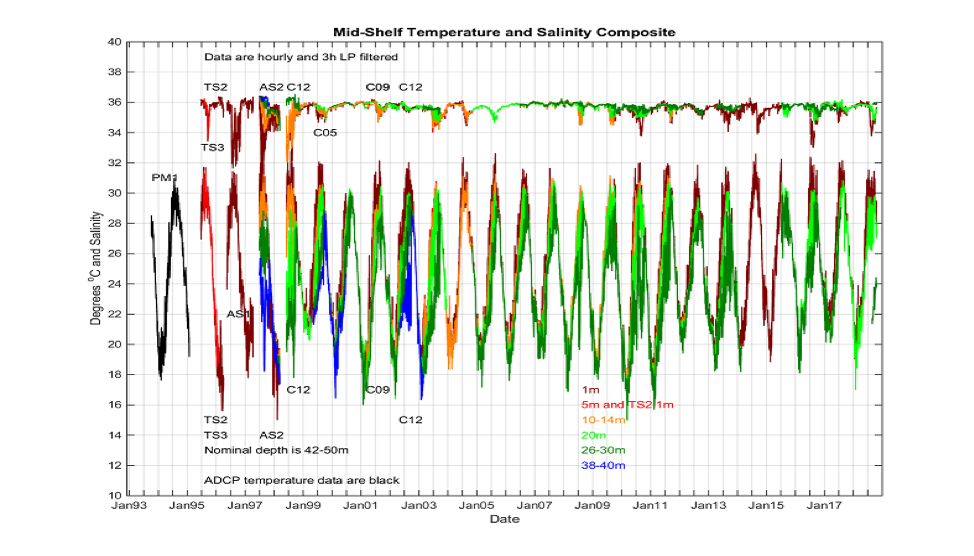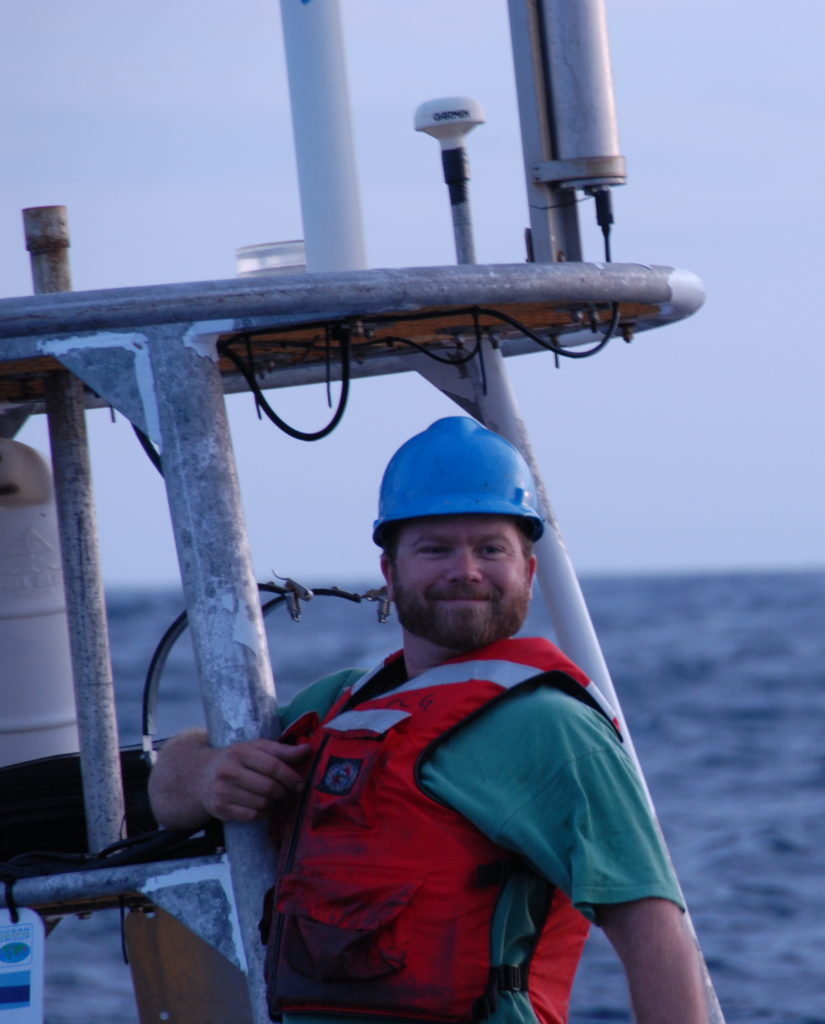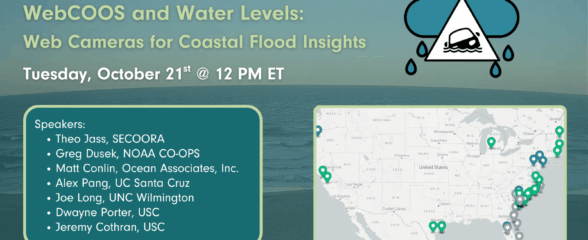
Since the early 1990s, sensors on offshore moorings have been collecting continuous, long-term measurements of physical oceanographic and meteorological variables on the west Florida shelf.
What do you with over 20 years of data collected by University of South Florida College of Marine Science Coastal Ocean Monitoring and Prediction System (USF-CMS COMPS)? The answer is quite a lot, but it all begins with creating climatologies which are used to analyze seasonal and long-term variability about the climatological averages. An example of this type of analysis is found in Liu and Weisberg (2012), a peer reviewed paper that analyzed the seasonal variability of circulation and sea level on the west Florida continental shelf using the first 10 years of USF COMPS data.


Mooring Technician, USF CMS COMPS
SECOORA is committed to continuing long-term observations off the west Florida shelf. These ever-lengthening datasets collected by USF-CMS are opening opportunities for students to look past seasonal cycles and into multi-decadal changes that may reflect a changing climate (Figure 1). As part of his PhD dissertation, USF CMS graduate student and mooring technician, Jay Law, is updating this prior 10-year climatology work to include the full, updated twenty-plus year data set, which will allow for long term changes to be studied.
Related news

Now Hiring: Director of Communications and External Affairs
SECOORA is seeking to fill the full-time role of Director of Communications and External Affairs. This role will serve as the organization’s strategic lead for engagement, communication, and external relations.

SECOORA Webinar | WebCOOS and Water Levels: Web Cameras for Coastal Flood Insights
On October 21st at 12 PM ET, SECOORA is hosting a webinar with investigators from the Webcam Coastal Observation System (WebCOOS) project team and the WebCOOS Project Manager. Web cameras are a low-cost technology that can be used to document flooding impacts to coastal communities. Register here.

SECOORA Funding Opportunity Announcement: Letters of Intent Solicitation
SECOORA will submit a coordinated regional proposal in response to the anticipated FY 2026 Implementation of the U.S. Integrated Ocean Observing System (IOOS) funding opportunity. Letters of Intent to be considered for inclusion in SECOORA’s full proposal are due September 9, 2025.